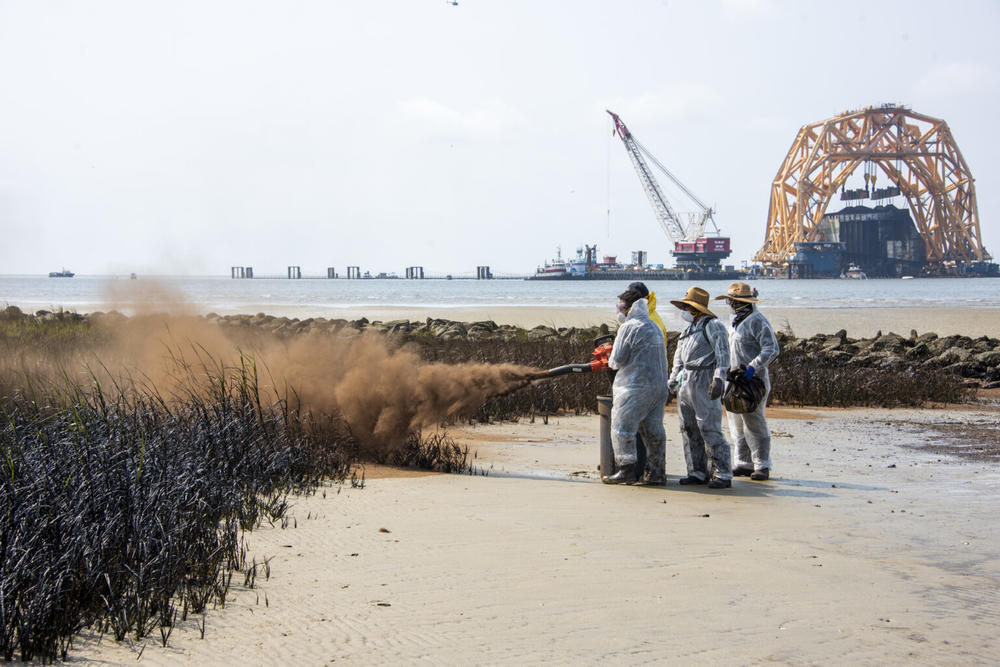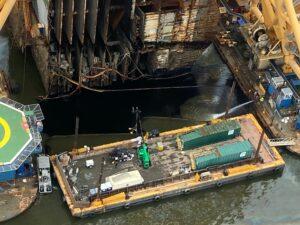
Caption
Clean-up crews apply sphagnum moss, which is meant to promote the natural breakdown process of oil while reducing the likelihood of any oil transferring to wildlife. Environmentalists have raised concerns about the tactic.
Credit: St. Simon's Sound Incident Response Photo


